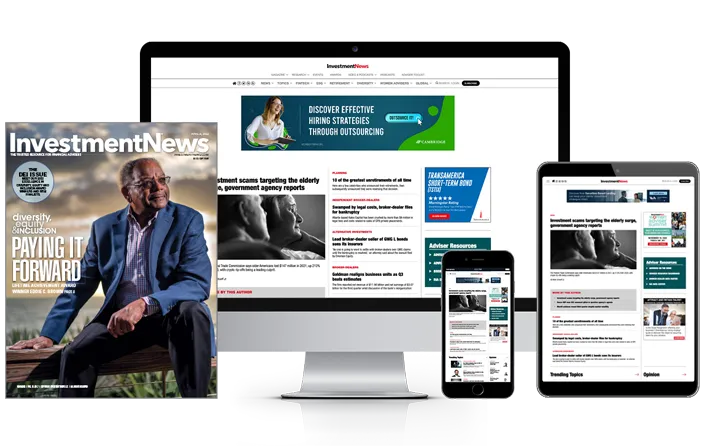

With equities in a bear market and bonds performing worse than they have in decades, how is it that M&A volume in the wealth management space continues to march forward at a record pace?
The harsh reality of the market is that the value of your firm is lower now than at the beginning of 2022. Unless you somehow went to cash or shorted the market, your revenues have declined right along with the value of the portfolios you manage. To make matters worse, your workload, and likely your overhead, has increased due to the time spent hosting extra meetings to reassure clients, answering calls and so on.
What, then, continues to drive the torrid pace of mergers and acquisitions? For one thing, other than lower earnings, other tailwinds remain strong. These include the need for a succession plan; the increased complexity (headaches) of the business encouraging people to sell; the importance of scale; and the desire of an aging advisory workforce to simplify and enjoy life.
All that, and there are still dozens of “serial acquirers” out there willing to pay premium prices for firms.
While the multiples being paid still haven’t declined, due to reduced revenues, firm earnings and values have. A firm that had been operating in December 2021 at a 40% margin may be operating at only a 20% margin today.
To compensate, deal structures have absolutely changed since the beginning of the year and will likely continue to evolve as owners attempt to drive maximum value for their businesses. As an example, a firm that sold late last year might have had a structure of 70% cash upfront and the remaining 30% paid 12 months out (provided some threshold of client retention was achieved). The market risk was typically transferred to the buyer and the seller would receive their second payment no matter where the markets were a year out.
Most advisers won’t agree to that same structure, so deals have become more creative. Rather than a firm’s value being fully locked in at today’s depressed earnings, many deals are constructed in a manner that, first, lets the adviser take some cash at today’s value; second, rolls some of their equity into their acquirer’s enterprise; and third, has long-term earn-outs that can be based upon future revenues, thereby allowing a seller to participate in a market recovery.
In terms of percentages, a deal today may be 30% cash up front, 25% equity roll and annual payments of 15% for three years. Importantly, the future payments are not based upon a firm’s current value, but rather a formula tied to revenues, performance or some other metric.
Will deal volume continue to increase? I’ve been wrong before, but I highly doubt it. In fact, given the increase in interest rates, along with the debt covenants that most of the larger RIAs have, my guess is that we’ll see a slowdown in the number of deals in the fourth quarter of the year.
Scott Hanson is co-founder of Allworth Financial, formerly Hanson McClain Advisors, a fee-based RIA with $15 billion in AUM.

Carson is expanding one of its relationships in Florida while Lido Advisors adds an $870 million practice in Silicon Valley.

The approval of the pay proposal, which handsomely compensates its CEO and president, bolsters claims that big payouts are a must in the war to retain leadership.

Integrated Partners is adding a husband-wife tandem to its network in Missouri as Kestra onboards a father-son advisor duo from UBS.

Futures indicate stocks will build on Tuesday's rally.

Cost of living still tops concerns about negative impacts on personal finances
RIAs face rising regulatory pressure in 2025. Forward-looking firms are responding with embedded technology, not more paperwork.
As inheritances are set to reshape client portfolios and next-gen heirs demand digital-first experiences, firms are retooling their wealth tech stacks and succession models in real time.
